
খুব সহজে করে নিন আপনার OLT Configuration Satting OLT CONFIGURATION
An Optical Line Terminal (OLT) is a fundamental element within optical communication networks, serving as a hub that facilitates the transmission and reception of data, voice, and video services to and from subscribers' locations. It acts as the central point for controlling and managing network traffic, enabling efficient broadband service.
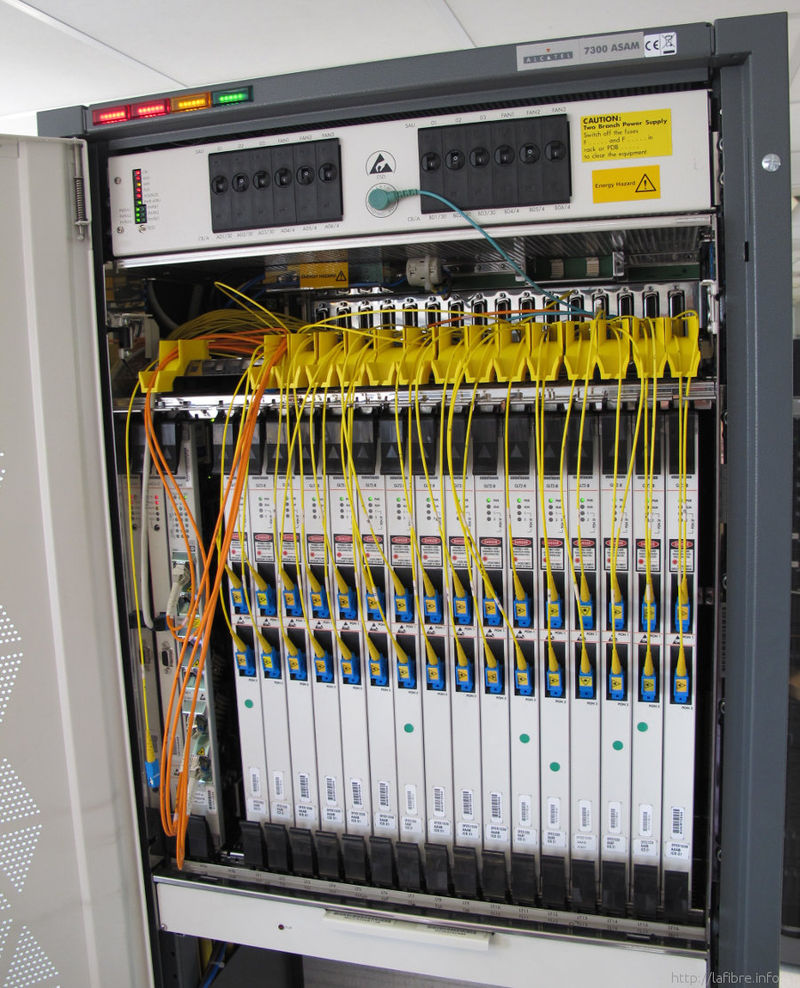
Olt Definition && Tips
An OLT is a device that acts as the passive optical network's endpoint for your ISP (PON). The OLT serves as a connection point between a PON and your ISP's main network. An OLT is simply ISP equipment. Optical Network Terminal (ONT) is an acronym for Optical Network Terminal. On your end, an ONT is a device that acts as the.

GPON qué es y qué importancia tiene en la conexión de fibra óptica
The OLT is the starting point for a PON, connected to an aggregation switch via Ethernet cables. In a system that combines PON and OLTS technologies, the OLT can support both GPON (Gigabit Passive Optical Network) and XGS-PON (10 Gigabit Symmetric Passive Optical Network) on a single platform. Offers flexibility in network deployment
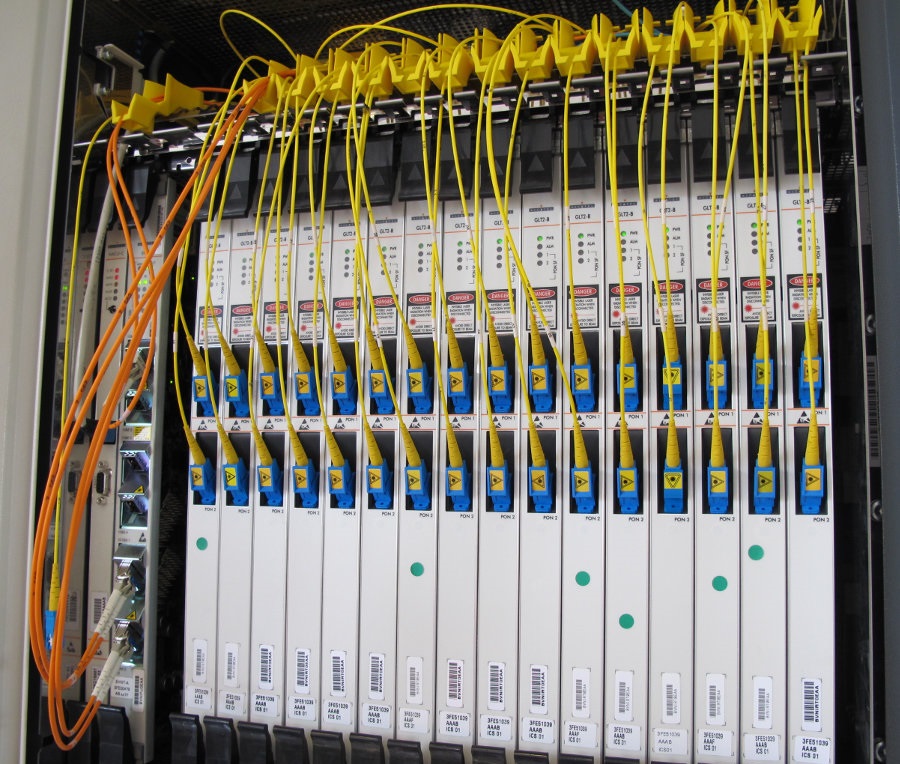
Optical Line Terminal (OLT) and Functions Cyber Security, Networking
OLT Meaning OLT is the abbreviation of Optical Line Terminal, which is a device used to connect optical fibers and transmit signals. The OLT is the starting point of the PON, connected to the aggregation switch through Ethernet cables. It makes a significant difference in PON. OLT equipment components OLT equipment generally includes racks, CSM.
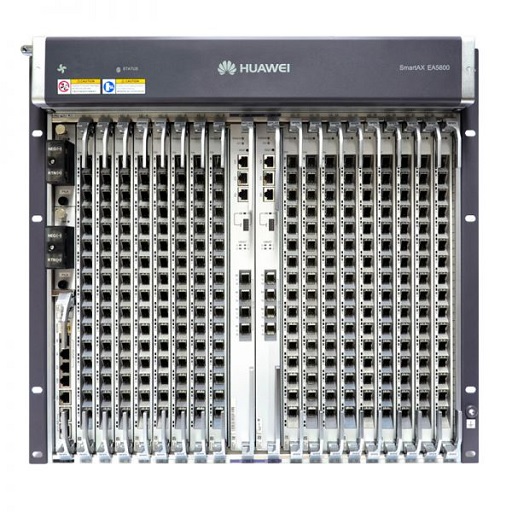
What is the Difference Between OLT and ONT? Router Switch Blog
In the PON network, the OLT is a vital component that acts as an interface between the ISP and the subscriber, serving as a crucial hardware endpoint. Its function is to communicate with the ONU on the user side through one or more ODN optical fiber distribution networks. The relationship between OLT and ONU is a master-slave communication.
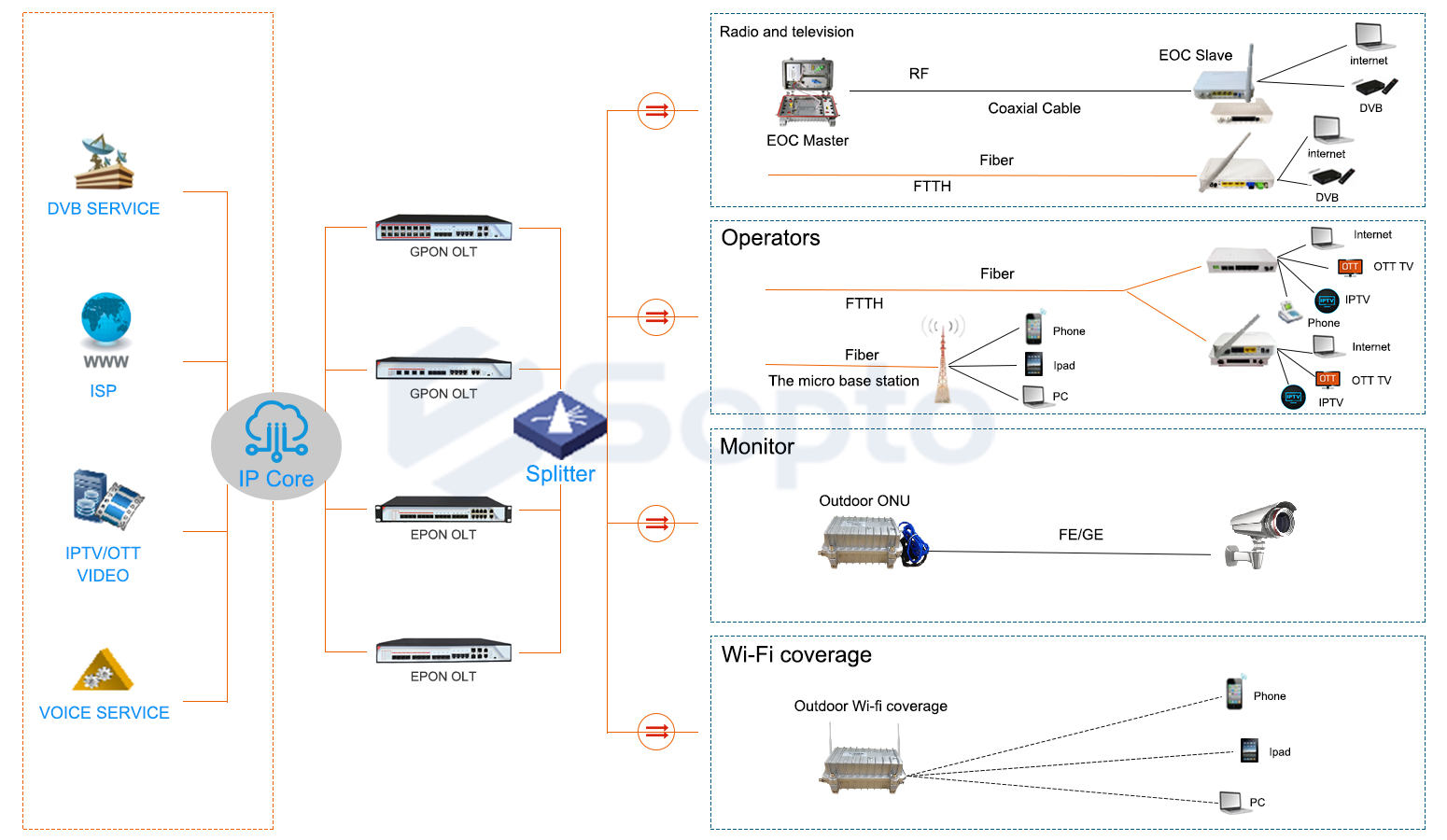
What Is the Difference Between OLT, ONU, PON, ODN? Sopto
The OLT is the core component of the optical access network, which is equivalent to a switch or router in a traditional communication network, and is also a multi-service providing platform. Typically placed at the central office to provide a fiber optic interface to the user's passive fiber optic network.

Functional diagrams of the OLT and ONU. Download Scientific Diagram
optical line terminal (OLT): An optical line terminal (OLT) is the endpoint hardware device in a passive optical network ( PON ).
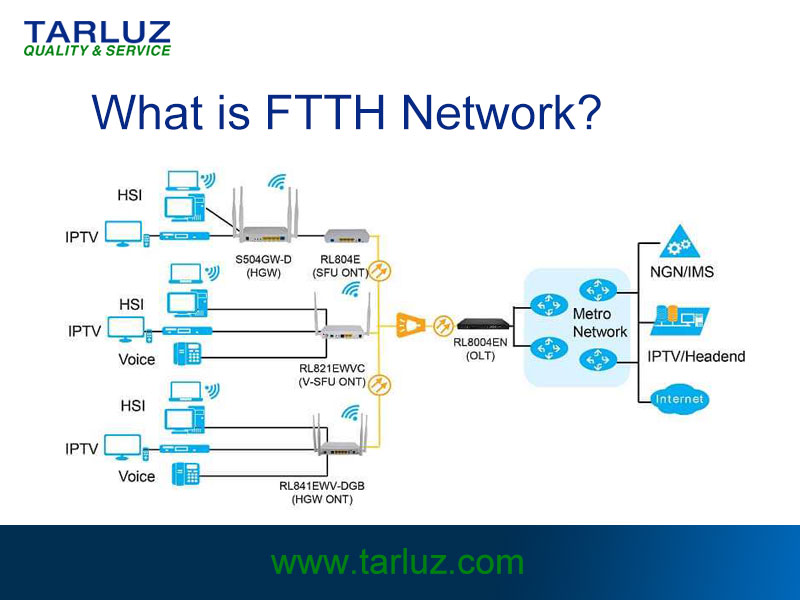
What is OLT, ODN, ONU and ONT in FTTH Network? FIBER OPTIC INFORMATION
An optical line terminal( OLT) is hardware that is used at the endpoint of the passive optical network.In this article, we will discuss Optical Line Terminal (OLT), its definition, features, and functions.So, let's get started with a basic introduction. The way of data communication through networks is revolutionized by the introduction of optical fiber technology.

OLT and ONT Introduction to OLT and ONT in FTTx networks
Location and Role: OLT: Positioned at the central office of the service provider, the OLT serves as the primary control center, overseeing the entire PON. It facilitates bidirectional data transfer with ONTs. ONT: Situated at the user's premises (e.g., home or business), the ONT functions as a vital link between the optical fiber cable and.
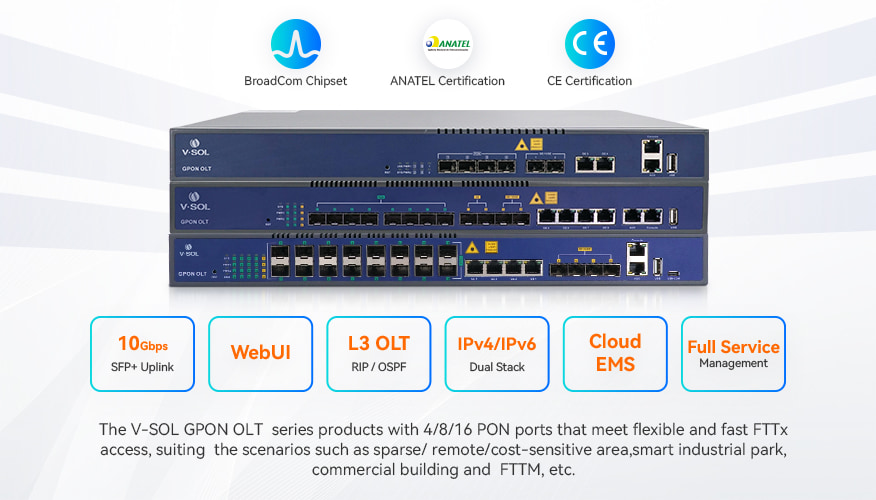
What is OLT (Optical Line Terminal) Features, Application
Optical line termination. An Alcatel-Lucent OLT used by the French operator CityPlay. OLT and ONU in fiber optic network. An optical line termination ( OLT ), also called an optical line terminal, is a device which serves as the service provider endpoint of a passive optical network. It provides two main functions:

How to configure OLT VLAN mode YouTube
OLT Meaning. OLT is short for optical line terminal, which is a device used to connect olt fiber and transfer signals. PON OLT is the starting point, which is connected to an aggregation switch through Ethernet cables. It makes a significant difference in PON. OLT Device Components.
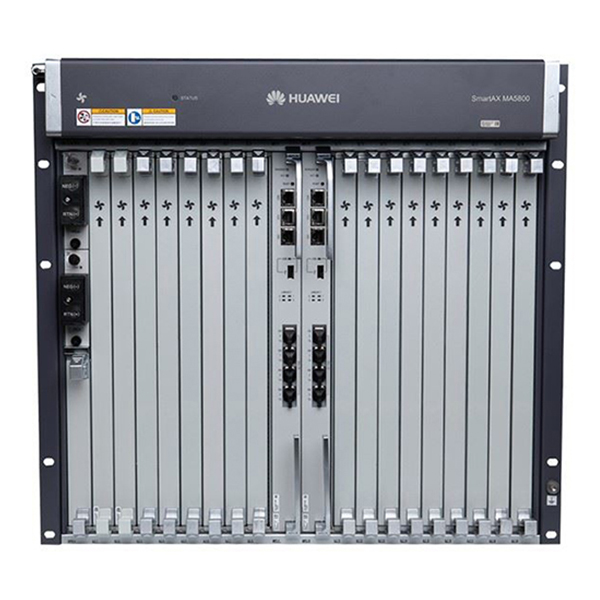
MA5800X17 Huawei GPON OLT Fiber Optic Communication Provider
ONT. Optical Network Terminals (ONTs) are effectively the same things as ONUs. They work via the same mechanisms to accomplish the same tasks. ONTs convert signals between fiber lines and other communication lines, and they are situated between OLTs and end users. The only difference between an ONT and an ONU is the body classifying the device.
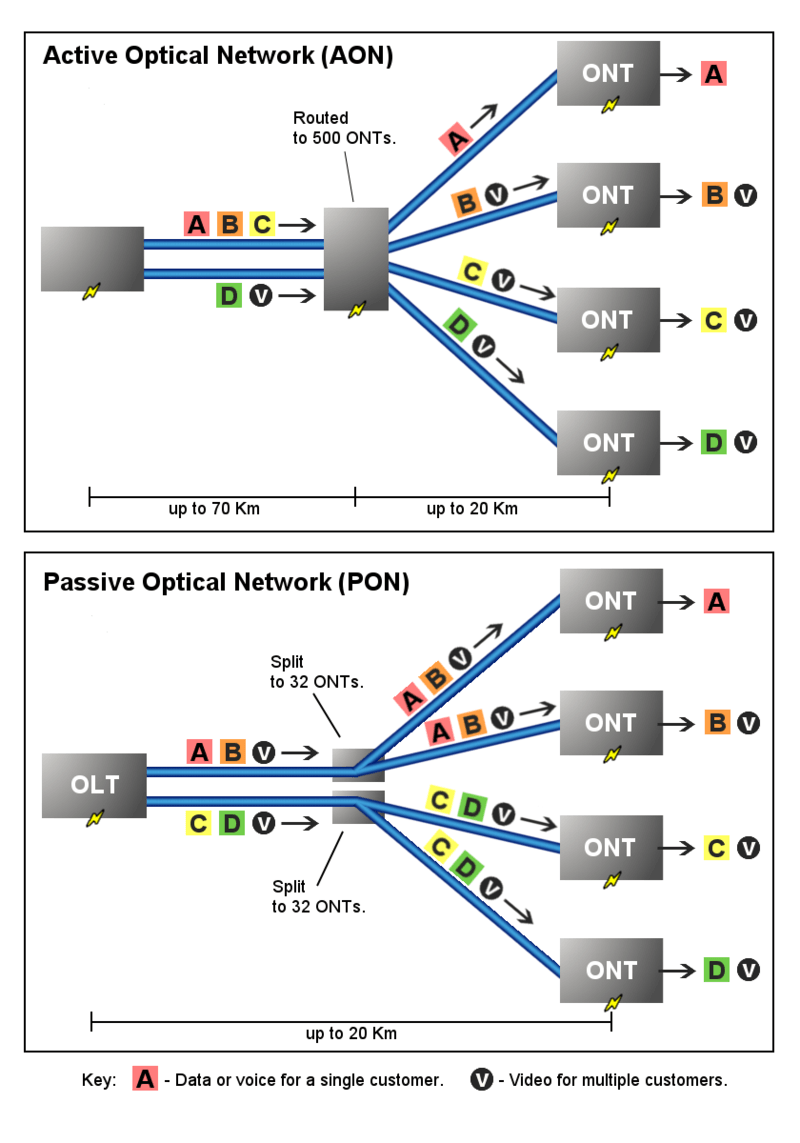
Optical Line Terminals Selection Guide Types, Features, Applications
The OLT is a gadget located at the central hub of your ISP. *First, working in FTTH (Fiber to the home). ISPs provide service to your home, and there is usually user equipment, which we call ONU/ONT. It is commonly referred to as ONT. Fiber to the home typically includes equipment in our home; in this case, ONT is the same meaning as ONU.

How to identify the EPON OLT interface YouTube
Optical Line Terminal (OLT) Definition: Optical Line Terminal or optical line termination is a device that basically acts as a part of a passive optical network (PON). It is present in the central office of the network and manages the transmission and reception of information across the overall network. Optical line terminal is abbreviated as OLT.
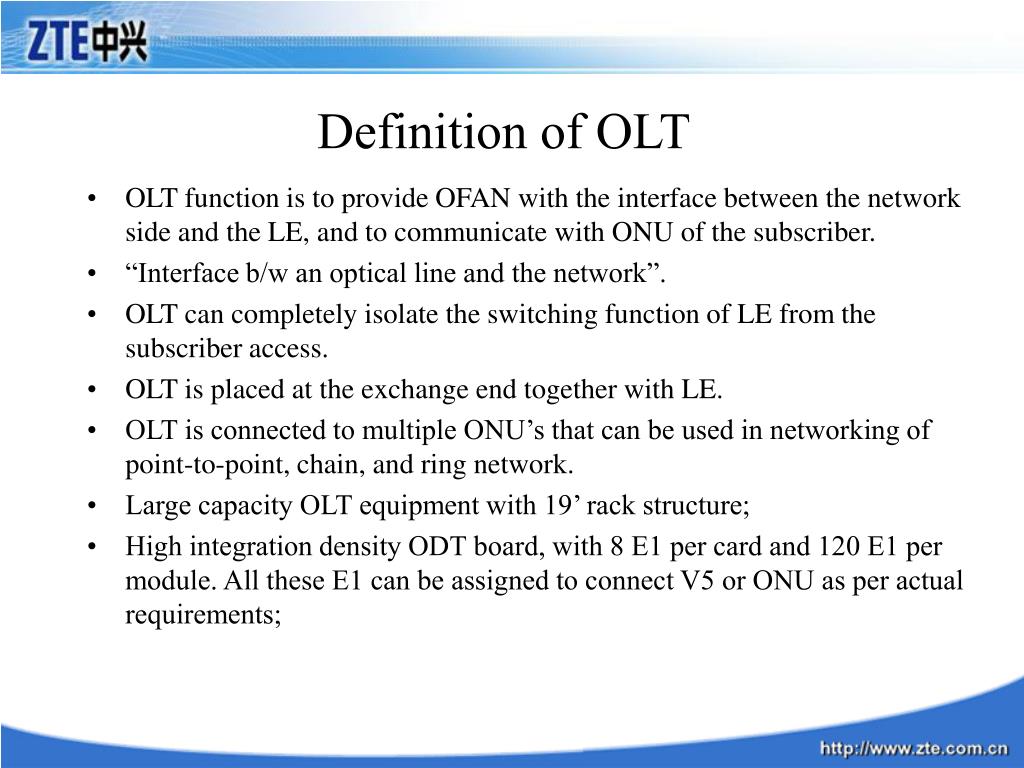
PPT Optical Fiber Access Network OFAN& ZXA10 PowerPoint Presentation
An OLT (optical line terminal), also known as optical line termination, acts as the endpoint hardware device in a passive optical network. The OLT contains a central processing unit (CPU), passive optical network cards, a gateway router (GWR) and a voice gateway (VGW) uplink cards. It can transmit a data signal to users at 1490 nanometers (nm).
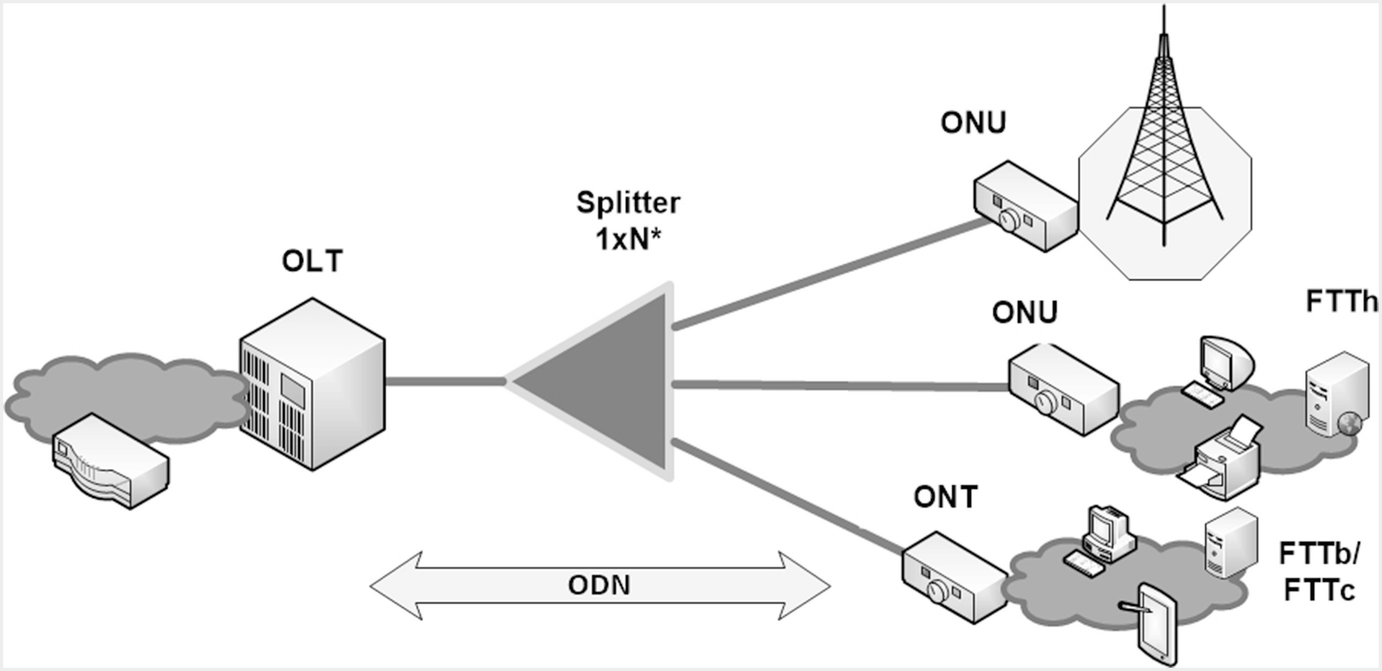
What are relations between OLT, ODN, ONU and ONT? FOC
An OLT is the device that serves as your ISPs endpoint of the passive optical network (PON). The OLT also provides the interface between a PON and your ISP's core network. Simply put, an OLT is ISP equipment. ONT stands for Optical Network Terminal. An ONT is the device that serves as the telecommunication chain's endpoint of the PON on.